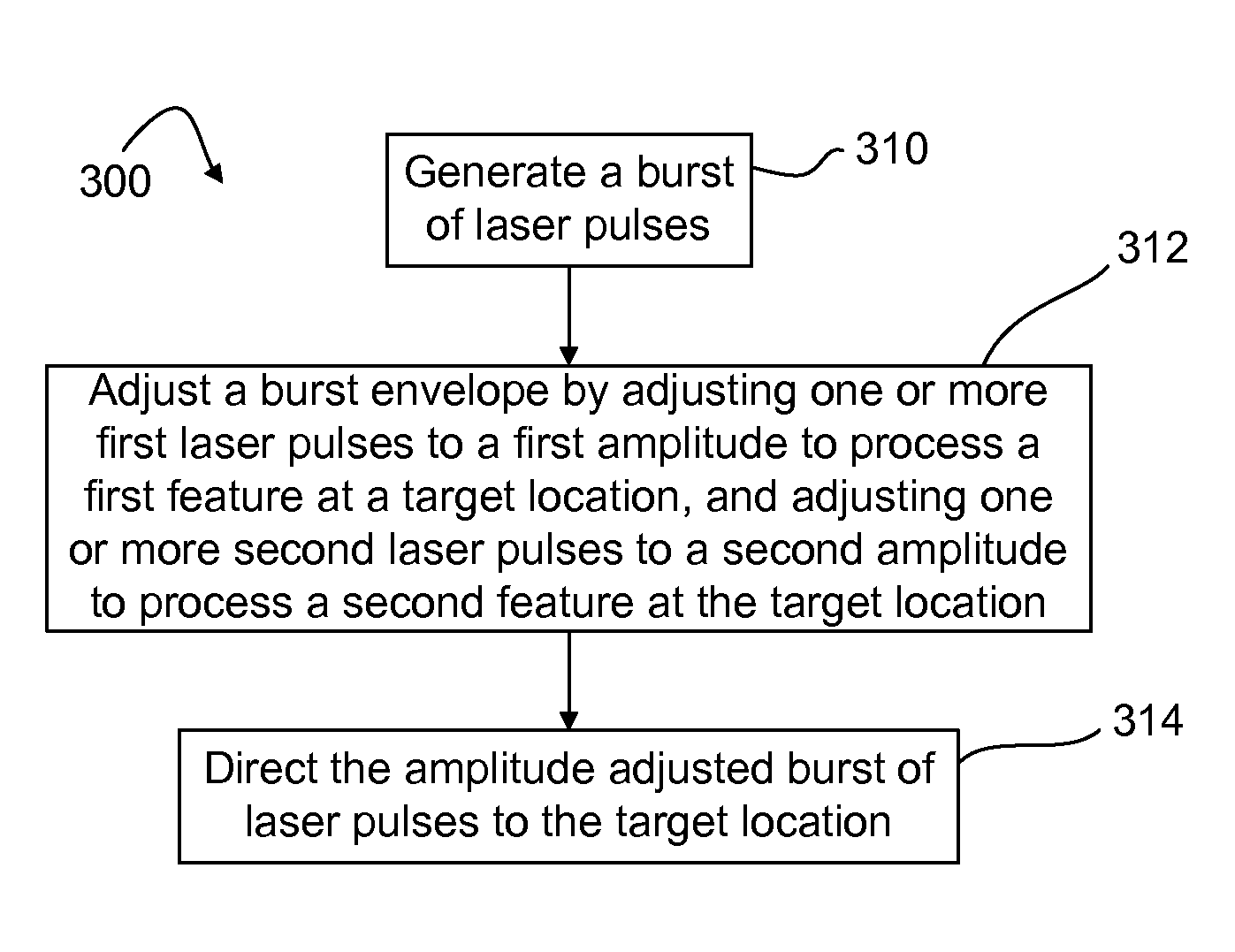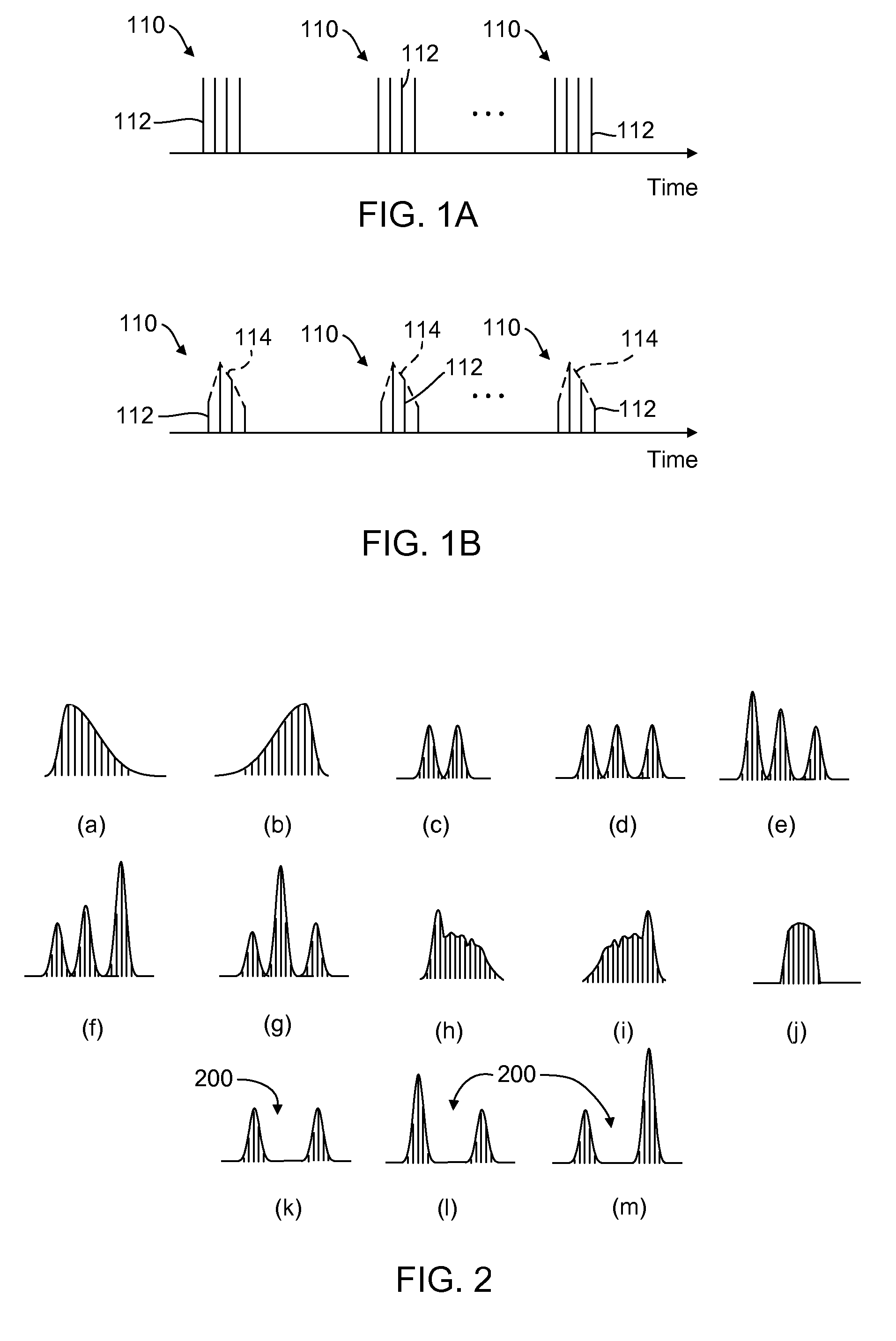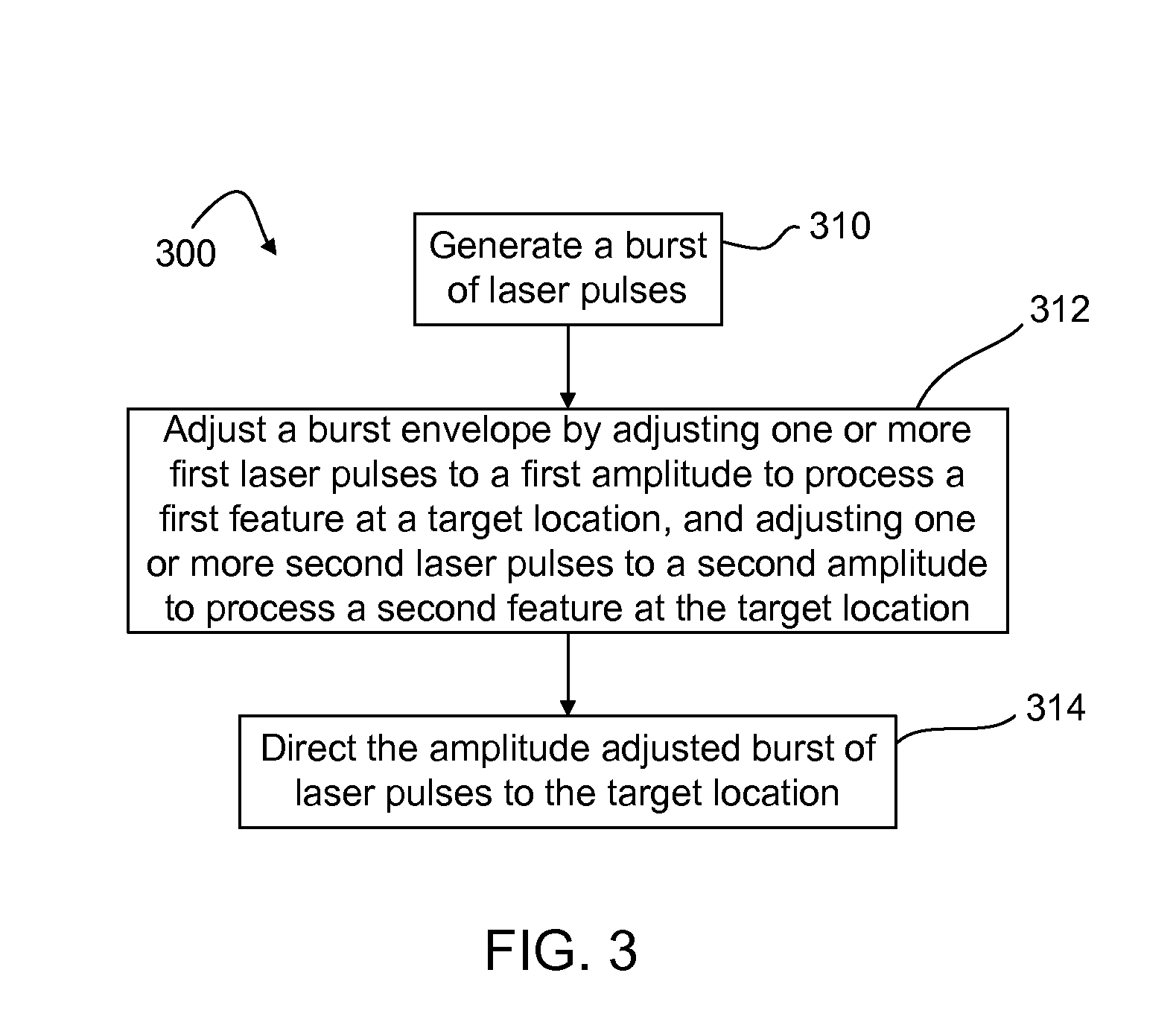Laser micromachining with tailored bursts of short laser pulses
a laser pulse and laser micromachining technology, applied in lasers, manufacturing tools, welding/soldering/cutting articles, etc., can solve problems such as “over crater”, reduce the reliability of ic chips, and non-optimal thickness
- Summary
- Abstract
- Description
- Claims
- Application Information
AI Technical Summary
Benefits of technology
Problems solved by technology
Method used
Image
Examples
Embodiment Construction
[0031]In certain embodiments, a series of laser pulse bundles or bursts are used for micromachining target structures. The target structures may be on or in semiconductor devices, for example, that have multiple layers with different laser processing characteristics. Or, the target structures may include a single material that has multiple laser processing characteristics. For example, a top surface of the material, a bulk or inner portion of the material, and a bottom surface of the material may have different laser processing characteristics. Further, the laser processing characteristics may vary at different depths within the material.
[0032]Each burst includes short laser pulses with temporal pulse widths that are less than approximately 1 nanosecond. In some embodiments, each laser pulse has a temporal pulse width in a range between approximately 1 nanosecond and approximately 100 femtoseconds. Temporal pulse widths that are less than approximately 10 picoseconds may be referred...
PUM
| Property | Measurement | Unit |
|---|---|---|
| wavelengths | aaaaa | aaaaa |
| wavelengths | aaaaa | aaaaa |
| wavelengths | aaaaa | aaaaa |
Abstract
Description
Claims
Application Information
 Login to View More
Login to View More - R&D
- Intellectual Property
- Life Sciences
- Materials
- Tech Scout
- Unparalleled Data Quality
- Higher Quality Content
- 60% Fewer Hallucinations
Browse by: Latest US Patents, China's latest patents, Technical Efficacy Thesaurus, Application Domain, Technology Topic, Popular Technical Reports.
© 2025 PatSnap. All rights reserved.Legal|Privacy policy|Modern Slavery Act Transparency Statement|Sitemap|About US| Contact US: help@patsnap.com



